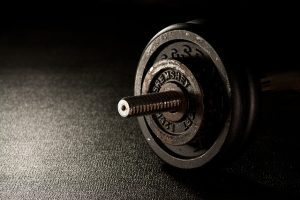Sleeping on one’s side is not only the most popular sleeping position, but it’s also the healthiest. Sleeping in this position with a straight back gives the most natural alignment to the spine. When your spine is in alignment, you know you’re sleeping in a perfectly healthy position. This article contains what you need to know about sleeping on your side.
The side sleeping position is when you sleep on your side with your arms close to your body. Side sleeping can help you breathe better and reduce sleep apnea. Also, it reduces joint, neck, and lower back pain due to the near-perfect spinal alignment. In the side sleeping position, the hips form the most pressure on the mattress. However, you can release some tension by placing a pillow between your knees.
Table of Contents
Benefits of Sleeping on Your Side
There’s more to side sleepers than snoring reduction. Whether it comes to you naturally or you want to switch to this position, here are the benefits you need to know about sleeping on your side:
- It’s the best sleeping position for fibromyalgia patients.
- Reduced risk of heart attack, diabetes, and brain fog.
- It flushes toxins from your brain.
- It improves digestion while sleeping and prevents heartburn.
So, you’re in good hands when you sleep on your side. You might think that it’s too good to be true, and you’re right. The type of mattress you use will make or break the benefits of sleeping on your side. In other words, your mattress should support your side sleeping habit. Without a supportive mattress, you will have a less than optimal sleep experience.
How to Sleep on Your Side (Things to Keep In Mind)
If you want to make the most out of sleeping on your side, you need to heed some rules. If you follow these practices, you will always wake up refreshed without any pain:
- Sleep on a mattress with medium firmness that supports your spinal alignment.
- Alternate between sleeping on your right and left sides when you can.
- Avoid using your arms as pillows. Instead, use a firm pillow to rest your head and neck.
- Keep your ears aligned to your shoulders and chin in a natural position.
- Your arms and hands should be far from your face and neck in a parallel position to your sides.
- Switch to the fetal position if you have back pain by bending your knees closer to your stomach.
Cons of Sleeping on Your Side
You need to know about sleeping on your side because it’s not always rainbows and sunshine. In this position, your face is in direct contact with your pillow. Dead skin cells, oils, and saliva could accumulate on your pillow, causing acne. Unless you’re using a high-quality pillow or changing pillowcases regularly, you might develop painful skin conditions.
Shoulder pain is also another risk for side sleepers. The slightest misalignment could place your shoulders in an awkward position all night long. As a result, you’ll wake up with shoulder pain that lasts for the next few hours. Your heart isn’t safe from the pressure either, especially if you sleep on your left side.
Furthermore, your arms aren’t safe from awkward sleeping positions. Putting your arms under the pillow for support won’t help. You might also risk sleeping on your arms and causing numbness.
As you can see, side sleepers come with some downsides. Luckily, it’s possible to avoid these cons by sleeping on the best mattresses for side sleepers.
Best Mattress Type for a Side Sleeper
If you’re a side sleeper, it’s necessary to know what type of mattress you should use. The type of mattress you sleep on will affect the quality of your sleep, as well as your physical health. Sleeping on a mattress not suited for side sleepers will increase the amount of pressure on your shoulders, hips, and joints. Thus, it’s essential to know the difference between mattress types in terms of material. The guide below will detail each type of mattress and whether or not they’re suited to your sleeping position. To learn more about the best mattresses for side sleepers, visit this article.
Memory Foam
The Good: Memory foam mattresses employ soft, plushy polyurethane materials to create the most comfort for side sleepers. You will feel like you’re sleeping on a fluffy cloud that contains your body.
The Bad: Memory foam mattresses are bad at air circulation. So, they trap your body’s heat and wake you up in the middle of the night soaked in sweat.
Latex
The Good: Latex mattresses are organic, firm, and breathable. Like upgraded memory foam, but much safer for your health.
The Bad: A bit pricey due to the natural materials used in manufacturing.
Spring
The Good: The traditional mattress is more breathable, supportive, and firm than memory foam mattresses. They also fall in a similar price category, and it’s economical.
The Bad: These mattresses can be squeaky due to the metal springs, but this will depend on the design. Furthermore, spring mattresses are too bouncy for some side sleepers.
Hybrid
The Good: Hybrid mattresses combine the support of spring and the comfort of latex, and they’re the best for side sleepers.
The Bad: They’re pricey and might differ in features depending on where you shop.
Conclusion
Side sleeping is the go-to position for the most health benefits, but it’s not always a rosy position. You’ll need supportive bedding, pillows, and mattresses to make it work. If you plan to sleep on your side, ensure that you’re keeping your ears aligned to your shoulders. Additionally, keep in mind that the side sleeping position will only be beneficial if you use a medium-firm mattress to support your hips and shoulders. The best mattress type for 99% of side sleepers is hybrid.
Featured Photo by cottonbro from Pexels




